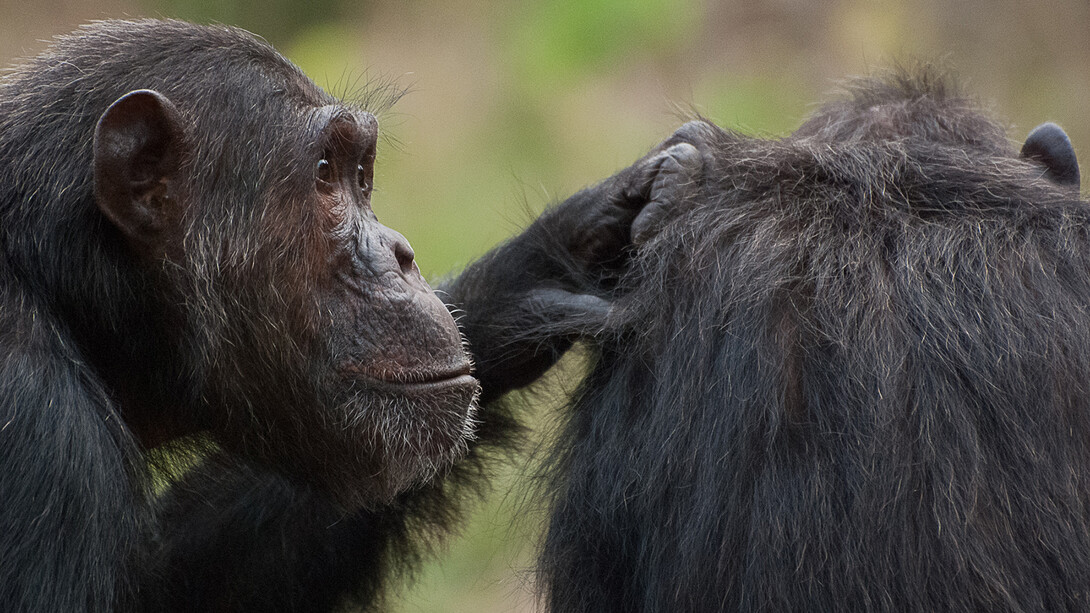
Chimpanzees and humans diverge by just over 1 percent of DNA, meaning that, biologically, chimps are more closely related to us than they are to gorillas.
But do those similarities extend to our brains and the ways we process information and remember things? A recent University of Nebraska-Lincoln study suggests they do.
A team led by Jeffrey Stevens, a researcher in the university’s Center for Brain, Biology and Behavior, recently demonstrated that chimps and humans exhibit nearly identical patterns in how they interact socially and how they remember things in their environment. The findings were published in August in the journal Royal Society Open Science.
The researchers examined nearly two decades of observational data from wild chimpanzees in Uganda in which observers recorded which chimps were together in groups. Stevens and his colleagues then looked at pairs of chimps within those groups, measuring how likely they were to be together given how frequently and recently they had been together in the previous few weeks. They found that when chimpanzees met frequently and/or recently, they were more likely to meet again in the future. Such patterns of contact match human social contact patterns.
Stevens said he was surprised by how well humans and chimps aligned when looking at how the frequency and recency of past interactions predict future interactions.
A previous study has found that frequency and recency similarly predict how well people remember objects they encounter in their environment. Human brains have a limited amount of storage space, Stevens said, so the mind quickly throws away information that it does not need. The cognitive system has adapted to keep memories based on things that reappear in predictable ways—such as the recency of a social contact or the frequency of a social contact—because these can predict future contact and our need to remember something.
Stevens’s team then explored whether memory shows the same patterns as social contact in chimpanzees. In a search of the literature, the researchers found that how frequently and recently chimpanzees encountered objects predicted how well they remembered them.
“We wanted to test this connection between memory and social contact in another species and see if chimps show this same kind of pattern of environment and memory, and how that pattern matches up with humans,” he said. “Within chimps, the ability of frequency and recency of contacts predicting future contact is the same (as humans).
“I was expecting the contact patterns to line up with the memory, but to see it fall into a pattern almost exactly like humans – it was just beautiful,” Stevens said.
That’s notable, he said, because it strongly suggests that chimp cognition has evolved to solve problems in their environment.
Stevens said the new research opens up interesting questions for potential further study.
“The next question is, did we get these similarities because of the common ancestry or do we have it because we’re facing similar problems in our environments?” he said.










